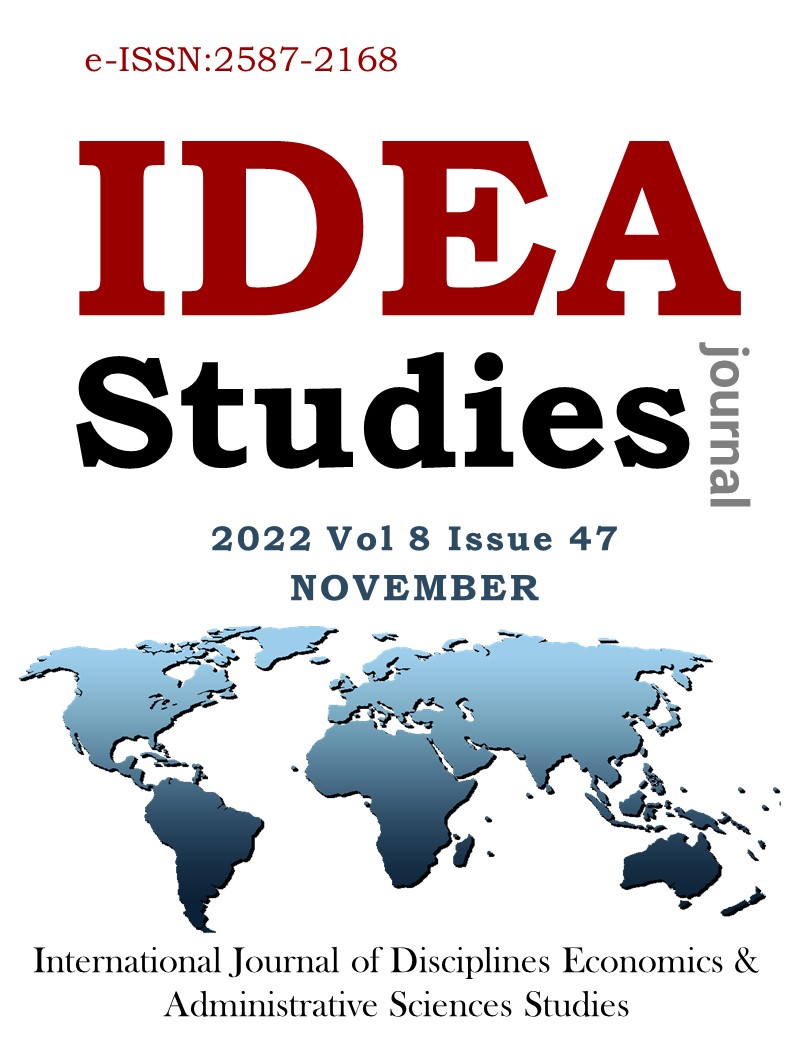Author :
Abstract
Küresel ticarette çok önemli bir role sahip olan deniz taşımacılığı pek çok paydaştan oluşmaktadır. Bu paydaşlar içerisinde taşımacılık faaliyetini gerçekleştiren gemiler ve gemilerin işletilmesini sağlayan gemi insanları çok önemli bir yere sahiptir. Teknolojinin gelişmesiyle birlikte günümüzdeki gemilerin eskiye nazaran aynı tip ve tonajdaki bir gemiye kıyasla daha az personelle donatıldığı görülmektedir. Buna karşın gemide istihdam edilen personelin daha kalifiye olması beklenmektedir. Bu noktada denizcilik eğitimlerinin verildiği kurumlara büyük iş düşmektedir. Denizcilikle ilgili eğitim kurumlarında Uluslararası Denizcilik Örgütünün (IMO) belirlemiş olduğu standartları karşılayacak başta simülasyon olmak üzere birçok laboratuvara ihtiyaç duyulmaktadır. Denizcilik eğitiminde başta köprüüstü simülasyonu olmak üzere GMDSS, ECDIS, gemi makine ve sıvı yük elleçleme gibi simülasyonlar kullanılmaktadır. Gemilerin yönetilmesiyle ilgili simülasyon kullanımı gelişen teknolojinin eğitime entegre edilmesiyle oluşturulmuş gerçekliği artırılmış sanal bir sistemdir. Bu nedenle çalışmada, gemi simülasyon kullanımının öğrencilerin mesleki yetkinliği üzerine etkisi incelenmiştir. Türkiye’de bulunan lisans ve ön lisans düzeyinde denizcilik eğitim alan 131 öğrenciden elde edilen veriler SPSS paket programında faktör analizi, güvenirlik analizi, korelasyon analizi, Anova ve t-testi gibi analiz yöntemleri kullanılarak değerlendirilmiştir. Sonuç olarak gemi simülasyonunun yaş, eğitim durumu gibi demografik bilgilerde dikkate alındığında iş hayatına katkısı olduğu, bilgi ve beceri kazandırdığı ve bilgileri aktif bir biçimde kullanabilmeyi sağlayarak öğrencilerin özgüvenini arttırdığı ortaya çıkmıştır.
Keywords
Abstract
Maritime transportation, which has a very important role in global trade, consists of many stakeholders. Among these stakeholders, the ships that carry out the transportation activities and the seafarer who ensure the operation of the ships have a very important place. With the development of technology, it is seen that today's ships are equipped with less personnel compared to a ship of the same type and tonnage compared to the past. On the other hand, it is expected that the personnel employed on the ship will be more qualified. At this point, a lot of work falls on the institutions where maritime training is given. Many laboratories, especially simulation, are needed in maritime education institutions that will meet the standards set by the International Maritime Organization (IMO). In maritime training and education, simulations such as bridge simulation, GMDSS, ECDIS, ship machinery and liquid cargo handling are used. The use of ship simulation is an augmented reality virtual system created by integrating the developing technology into education. Therefore, the aim of this study is to examine whether the use of ship simulation influences students' skills. The data obtained from 131 undergraduate and associate degree maritime education students in Turkey were evaluated using factor analysis, reliability analysis, correlation analysis, Anova, t-test. As a result, when factors such as age, education level are examined with criteria such as thinking that ship simulation contributes to business life, thinking that it provides knowledge and skills, it is revealed that the use of ship simulation gives students self-confidence and enables them to use information actively.
Keywords
- 1. Albayrak, T. (2009). Uluslararası Standartlarda Türk Denizcilik Eğitimi Modeli. Doktora Tezi, Deniz Bilimleri ve İşletmeciliği Enstitüsü, İstanbul Üniversitesi, İstanbul.
- 2. Barış, S. ve Kandilli, İ. (2021). Türkiye’de Denizcilik Eğitimi Veren Meslek Yüksekokulu ve Fakültelerde
- 4. BIMCO (2010). MANPOWER 2010 Update The Worldwide Demand For And Supply of Seafarers Highlights.Erişim adresi: : https://www.bimco.org, adresinden alındı.12.03.2022.
- 5. BIMCO (2015). MANPOWER Report The Global Supply and Demand for Seafarer. Erişim adresi: https://www.bimco.org, adresinden alındı, 11.03.2022.
- 6. Bolat, F. (2021). Denizcilik Eğitiminde Kullanılan Simülatörlerin Dünya Çapında Dağılımı. Akıllı Ulaşım Sistemleri ve Uygulama Dergisi. Bandırma Onyedi Eylül Üniversitesi.
- 7. Boran, İ. (2008). STCW-F sözleşmesi ve Türkiye. Doktora Tezi, Karadeniz Teknik Üniversitesi Fen Bilimleri Enstitüsü.
- 8. Çiçek, İ. (2003). Integration of Marine Engineering Simulators into Maritime Engineering Education.First General Assembly of The Chamber of Marine Engineers of Turkey, (s. 8-27). İstanbul.
- 9. Franca, J., Stark, K., Praetorius, G., Snöberg, J. (2021). Development of a Debriefing Tool for
- 11. Grech, M. R., Horberry, T. J., & Koester, T. (2008). Human Factors in the Maritime Domain (1st Editio). Taylor França J. et al. - Debriefing Tool for Performance Evaluation 7 & Francis Group, CRC Press.
- 12. Håvold, J. I., Nistad, S., Skiri, A., & Odegård, A. (2015). The human factor and simulator training for offshore anchor handling operators. Safety Science, 75, 136–145. https://doi.org/10.1016/j.ssci.2015.02.001
- 13. Hontvedt, M. (2014). Simulations in Maritime Training: A Video Study of The Socio-Technical Organisation of Ship Simulator Training, Oslo: Oslo University, Faculty of Education Science.
- 14. International Maritime Organization (IMO) (2010). Adoption of The Final Act and Any Instruments, Resolutions and Recommendations Resulting From The Work of The Conference (STCW). Conference Of Parties To The International Convention on Standards of Training, Certification and Watchkeeping for Seafarers, 1978: https://www.imo.org.tr/ adresinden alındı (18.04.2022).
- 15. Kara, G., Arıcan, O. H., Okşaş, O., (2020). Analysis of the effect of electronic chart display and information system simulation technologies in maritime education. Marine Technology Society Journal, cilt.54, ss.43-57, DOI: 10.4031/mtsj.54.3.6
- 16. Mindykowski, J. (2017). Towards safety improvement: implementation and assessment of new standards of competence for Electro-Technical Officers on ships. Maritime Policy and Management, 44(3), 336–357. https://doi.org/10.1080/03088839.2016.1275861
- 17. Terzioğlu, F., Kapucu, S., Özdemir, L., Boztepe, H., Duygulu, S., Tuna, Z., & Akdemir, N. (2012). Simülasyon Yöntemine İlişkin Hemşirelik Öğrencilerinin Görüşleri. Sağlık Bilimleri Fakültesi Hemşirelik Dergisi, 16-23.
- 18. Ulaştırma ve Altyapı Bakanlığı. (2020). Ulaşan ve Erişen Türkiye 2020, https://www.uab.gov.tr/ adresinden alındı (08.04.2022).
- 19. Ulusoy, Ü. H. (2013). Uluslararası Gemi Adamları Sözleşmesi (STCW-1978) ve Değişiklikleri Örneğinde Uluslararası Antlaşmaların Türk Hukuku'nda Yürürlüğü ve Yargısal Denetimi Sorunu. Ankara Üniversitesi Hukuk Fakültesi Dergisi, 501-538.
- 20. Yazıcıoğlu, Y., ve Erdoğan, S. (2004). SPSS Uygulamalı Bilimsel Araştırma Yöntemleri (1. bs.). Ankara: Detay Yayıncılık.
